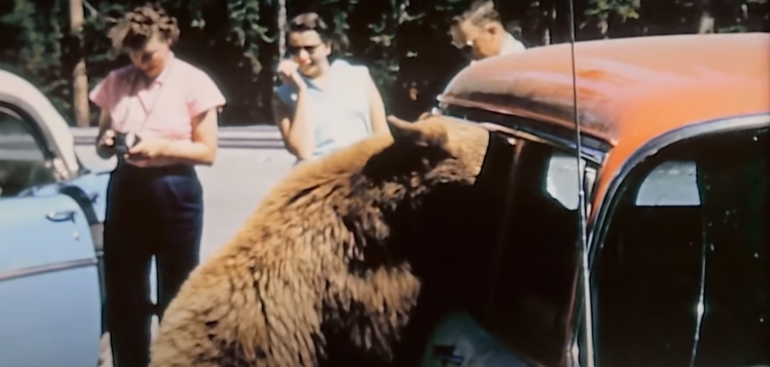VIDEOS: People Used To Feed the Bears at Yellowstone All Day Long!

There's a good reason why there are teddy bears, and not teddy hagfishes or teddy vultures; bears are very cute. This is an objective fact.
But as we Montanans know, the cuteness which runs so deep in these bears can be dangerous because cute or not, they are wild animals. With claws. That weight hundreds of pounds. And yet as late as 1970 people were still feeding bears in the park, and the results were not always cute.
In September 1924 alone there were 88 bear bites reported at West Thumb Geyser Basin alone. As the bears grew accustomed to being fed by humans, they grew less afraid of them. And a healthy fear of humans is necessary to the well-being of the park's bears. As they grow less fearful of humans, the likelihood of injurious encounters dramatically increases, and that goes for both the bear and the people.
Still, a part of you has to admit: it would have been kind of nice to let your furry new buddy have a lick of your ice cream cone, or to share your PB & J with Yogi and Booboo.
Come to think of it, just the existence of Yogi proves how widespread bear-feeding was at Yellowstone; it was such a frequent and well-known happening that they made a cute cartoon about just that, with the affable Yogi and his little buddy trawling for pick-a-nick baskets at "Jellystone Park". I don't think I ever saw every episode, but I don't recall whether Yogi ever casually mauled a park-goer. I somehow doubt it.
The degree to which the bears grew accustomed to human is illustrated by the presence of mothers and cubs. Mama bears, ordinarily fiercely protective of cubs, withdrawing or attacking at the presence of humans, were bringing their babies around like they were heading to the buffet. Watch how tourists are feeding the bears by hand.
Park historian Lee H Whittlesey, in his aptly titled Death In Yellowstone, writes that the height of bear attacks as a result of human feeding was in the 1930s - from 1931 to 1969 there were an average of 46 bear-related injuries to park-goers a year, but in the 1930s there were 115 injuries in one year alone.
These days the open garbage dumps have long been closed and the bears, no longer incentivized for interacting with humans, have receded from the road. The tenous balance between the species has been restored, or at least improved.
Remember: if you go to the park, don't feed any of the wildlife. Instead, we recommend bringing several bags of cheetos and, if you must feed someone, toss handfuls of them at tourists instead.
Leave a Comment Here